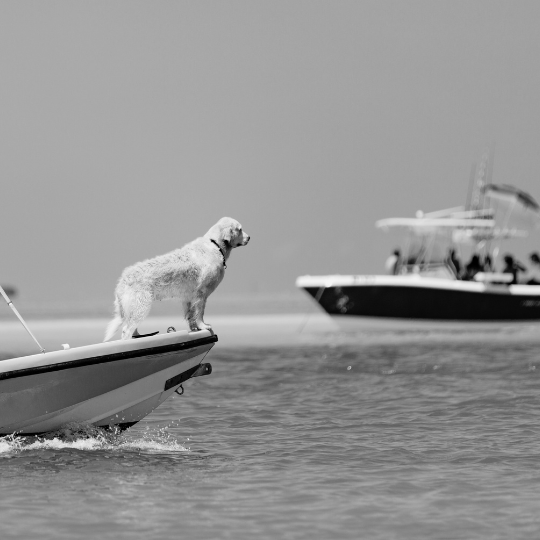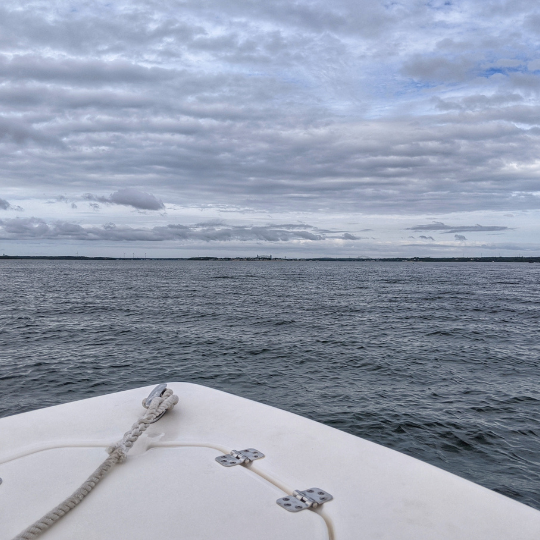November 21, 2023
In the expansive journey of business expansion, entrepreneurs face the challenging fiscal frontier, where the dynamics of capital ebb and flow are as unpredictable as the changing tides. Navigating this financial expanse requires strategic prowess, akin to steering through the uncertain currents of a vast ocean.
Here, at the fiscal frontier, the captain of the enterprise must deftly handle the challenges posed by limited capital. It's a complex voyage, reminiscent of navigating through unpredictable winds that can either propel the ship forward or stall progress. Strategic decision-making becomes the navigational chart, guiding the vessel through the intricacies of investments, operational expenses, and the imperative need for working capital.
Entrepreneurs must weigh anchor judiciously when contemplating strategic investments—deciding between technological advancements, marketing initiatives, or expanding the crew—all while maintaining a steady course towards growth. Securing favorable financing or exploring alternative funding sources becomes the compass, guiding the ship through the foggy uncertainty of the fiscal frontier.
As the business vessel sails through these capital conundrums, mastery of the financial helm determines whether it reaches new horizons or is caught adrift in the sea of stagnation. The fiscal frontier, though challenging, offers opportunities for those who skillfully navigate its waters, turning financial constraints into a springboard for successful and sustainable business expansion.

In the bustling marketplace, akin to a lively regatta, entrepreneurs encounter the relentless storm of competition as they set sail for business expansion. Much like competing vessels jockeying for the lead, businesses must navigate through the tumultuous waves of rival enterprises vying for the coveted consumer crown.
The seas of market mayhem are fierce, demanding strategic agility and a keen understanding of consumer preferences. British entrepreneurs must weather the competition storm by crafting distinctive offerings that stand out in the crowded harbor of consumer choices. It's a strategic dance, where the captain of the business vessel must anticipate the moves of competitors, harness the winds of innovation, and set a course that captivates the audience.
Building a robust brand becomes the ship's sturdy mast, providing stability amidst the stormy market seas. Entrepreneurs must master the art of differentiation, unfurling sails of unique value propositions and exceptional customer experiences. Just as a skilled sailor adjusts the sails to catch the wind, businesses must adapt their strategies to capture the changing breezes of consumer trends.
Strategic partnerships become the anchor in the tempest, providing stability and additional wind in the sails. Collaborating with other businesses, suppliers, or distributors can offer a competitive advantage, allowing the business vessel to navigate through the market mayhem more effectively.
In the spirited race for consumer attention, British entrepreneurs must steer their vessels with a keen eye on the competition, leveraging innovation, differentiation, and strategic alliances to not just weather the storm but emerge as leaders in the regatta of market dynamics. The storm of competition, though challenging, is the crucible where successful businesses forge their competitive edge and sail towards the horizon of sustained growth.
As businesses set sail towards growth, they encounter the challenges of talent management—a dynamic force that demands strategic navigation through the workforce winds. In the expansive seas of expansion, recruiting and retaining skilled professionals becomes a journey of navigating through uncertain waters, demanding a keen sense of direction and adaptability.
Entrepreneurs take on the role of captains, tasked with assembling a crew of skilled and motivated individuals. The competitive seas require not only competitive compensation but also the creation of a workplace culture that fosters growth, learning, and a sense of purpose.
Retaining this crew necessitates providing clear career progression, mentorship programs, and a work environment that values employee well-being. As the ship of business expands, the captain must be attuned to the changing winds of employee expectations, ensuring that the sails are set to harness the gusts of employee engagement.
Strategic human resource practices become the compass, guiding the ship through the talent tempest. Effective recruitment strategies, talent development initiatives, and a commitment to diversity and inclusion serve as essential tools in navigating the workforce winds. Entrepreneurs must be agile, adjusting their sails to the shifting expectations and demands of the modern workforce.
In the talent tempest, businesses that master the art of workforce navigation not only weather the winds successfully but also turn the challenges into opportunities for employee and business growth alike. The entrepreneur, much like a skilled mariner, understands that a well-assembled and motivated crew is the key to a steady and prosperous voyage through the expansive seas of business expansion.

Much like a ship facing unforeseen storms, scaling operations demands a meticulous charting of new courses in efficiency to ensure a smooth and prosperous voyage.
The entrepreneur takes on the role of the ship's captain, steering through the waves of change to optimize processes and systems. What once worked seamlessly in calmer waters may encounter turbulence as the business expands. The challenge lies in identifying bottlenecks, streamlining workflows, and ensuring that the ship sails efficiently through the operational seas.
Strategic decisions become the compass, guiding the ship through the complexities of scaling operations. Entrepreneurs must assess the crew's capabilities, invest in technology to enhance efficiency, and adapt their operational strategies to meet the evolving demands of a growing business.
Much like a ship retrofitting its hull for greater speed, businesses must embrace technological advancements to stay competitive. This may involve integrating new software, adopting automation, or reengineering supply chain processes. The ship's crew, representing the workforce, plays a crucial role in adapting to these changes and ensuring a smooth operational voyage.
The operational odyssey demands constant vigilance, with the captain and crew working in harmony to navigate the challenges of growth. Successful businesses not only weather the operational storms but also find opportunities to innovate, setting sail towards new horizons with enhanced efficiency and a well-optimized operational compass.
Entrepreneurs face the formidable challenge of regulatory reckoning—a tidal wave of compliance that demands strategic navigation through complex legal waters. Much like a ship navigating through intricate channels, scaling a business requires a keen understanding of the ever-evolving regulatory currents.
Entrepreneurs, taking on the role of navigators, must chart a course that ensures compliance with an array of laws and regulations. The seas of regulation run deep, demanding not only adherence to existing laws but also the ability to anticipate and adapt to changes in the regulatory landscape.
Navigating this regulatory tidal wave requires the development of a robust compliance framework. Entrepreneurs must stay informed about industry-specific regulations, engage legal expertise, and implement internal processes that ensure the business sails smoothly through the legal waters. Failure to navigate these regulatory currents effectively could result in fines, legal challenges, and reputational damage.
Strategic decision-making becomes the compass, guiding the ship through the intricacies of compliance. Entrepreneurs must weigh the impact of regulatory changes on their operations, adjusting their sails to meet new requirements and ensure the business remains on course.
In the regulatory reckoning, successful businesses not only meet the minimum requirements but also use compliance as a competitive advantage. By demonstrating a commitment to ethical business practices and regulatory adherence, entrepreneurs can build trust with customers and partners, fostering a reputation as a responsible and reliable navigator in the complex seas of business expansion.

Businesses face the dynamic challenge of navigating customer currents—a journey where retaining loyalty in the changing tides of consumer behavior becomes a strategic art. Much like a ship adjusting its sails to catch the wind, businesses must adapt to the shifting currents of customer preferences and expectations.
Entrepreneurs, akin to skilled navigators, must recognize that customer loyalty is a valuable treasure in the seas of competition. Balancing the acquisition of new patrons while retaining the allegiance of existing customers requires a nuanced understanding of the market currents and the ability to anticipate and respond to changes.
The customer currents demand a personalized approach. The ship's captain, representing the business owner, must engage in meaningful interactions with customers, understanding their needs and preferences. Implementing customer feedback mechanisms, personalized marketing strategies, and loyalty programs becomes the compass, guiding the ship through the currents of customer retention.
In the age of digital navigation, businesses must harness technology to enhance the customer experience. From seamless online transactions to personalized communication, staying attuned to the technological currents ensures that the ship of business remains competitive and customer-centric.
Strategic partnerships, much like favorable winds, can propel the ship forward. Collaborating with other businesses or influencers can expand the reach and appeal of the brand, fostering customer loyalty in new market segments.
Successful businesses not only ride the currents of customer loyalty but actively shape them. By consistently delivering exceptional experiences, adapting to changing expectations, and maintaining open communication, entrepreneurs ensure that their ship sails not just with customers but with brand advocates navigating the changing tides of consumer preferences.

Entrepreneurs often find themselves in the Decision Doldrums—a challenging stretch where steering through strategic crosswinds becomes a test of leadership and vision. Much like a ship caught in a windless sea, businesses must navigate through periods of uncertainty, making strategic decisions that determine the course of their journey.
The entrepreneur, serving as the captain, must weigh the winds of change, market dynamics, and internal capabilities when charting a course for the business. Strategic decision-making becomes a complex dance, requiring adaptability and a deep understanding of the ever-shifting business landscape.
The Decision Doldrums demand a clear vision and the ability to assess risks and opportunities with foresight. Entrepreneurs must not only make decisions that address current challenges but also anticipate future trends, ensuring that the ship remains on a trajectory toward growth and sustainability.
Strategic planning becomes the compass, guiding the ship through the Decision Doldrums. Businesses must conduct thorough market analyses, scenario planning, and risk assessments to inform their decision-making processes. The ship's captain must engage with the crew, fostering a collaborative environment that taps into diverse perspectives and expertise.
As the ship sails through the Decision Doldrums, resilience becomes a key attribute. Entrepreneurs must weather moments of uncertainty, trusting in their strategic compass and adjusting their sails when needed. It's a period where strategic pivots may be necessary, and the ability to make informed decisions in the face of ambiguity becomes a hallmark of successful navigation.
Successful businesses not only steer through the Decision Doldrums but emerge from them with strengthened resolve and clearer direction. By embracing strategic agility, fostering a culture of innovation, and making decisions that align with long-term objectives, entrepreneurs can navigate the crosswinds and set a course for sustained success in the dynamic seas of business expansion.
In the expansive seas of business expansion, entrepreneurs inevitably encounter the challenging phenomenon of Supply Chain Squalls—a tempestuous environment where disruptions and uncertainties in the supply chain can create stormy waters for the business vessel.
Much like a ship navigating through unpredictable weather patterns, successful entrepreneurs must master the art of navigating through these supply chain challenges.
The ship's captain, embodying the business owner, must navigate through global events, economic fluctuations, and geopolitical shifts that can create squalls in the supply chain. From raw material shortages to transportation disruptions, the seas of the supply chain demand strategic planning and flexibility.
Strategic risk management becomes the compass, guiding the ship through the supply chain squalls. Entrepreneurs must conduct thorough assessments of their supply chain vulnerabilities, identify alternative suppliers, and implement contingency plans to ensure the ship remains resilient in the face of unforeseen challenges.
Collaboration with key suppliers becomes the anchor in the supply chain squalls. Building strong relationships and communication channels with suppliers fosters agility and ensures that the ship can navigate through disruptions with minimal impact.
Investing in technology, such as supply chain visibility tools and real-time tracking systems, becomes essential in navigating the stormy waters of the supply chain. The ship's crew, representing the workforce, plays a crucial role in adapting to changes, ensuring that the supply chain remains a well-oiled machine even in the face of squalls.
Successful entrepreneurs not only navigate through supply chain squalls but also turn them into opportunities for optimization. By fostering a resilient supply chain, diversifying sourcing strategies, and staying attuned to global trends, businesses can sail through stormy waters and emerge with a more robust and agile supply chain.
In the dynamic waters of business growth, entrepreneurs are bound to encounter the unpredictable Economic Ebb and Flow—a phenomenon where economic downturns and fluctuations create swells that can either propel the business forward or pose challenges to its stability. Much like a ship navigating through changing tides, successful entrepreneurs must steer their vessels through these economic waters with strategic foresight.
The ship's captain, embodying the business owner, must be adept at reading economic indicators, understanding market trends, and adjusting the ship's course accordingly. Economic swells can manifest as recessions, inflation, or shifts in consumer spending, demanding a keen sense of economic navigation.
Strategic financial planning becomes the compass, guiding the ship through economic swells. Entrepreneurs must assess their financial resilience, maintain healthy cash flow, and establish contingency plans to navigate through economic downturns.
Diversifying revenue streams and adjusting pricing strategies are crucial tactics in sailing through the economic ebb and flow.
Collaboration with financial experts becomes the anchor in economic swells. Establishing relationships with financial advisors, staying informed about economic forecasts, and adapting business strategies based on economic indicators help businesses stay afloat in turbulent economic waters.
Investing in innovation and market differentiation serves as the ship's engine, propelling it forward even in the face of economic challenges. The ship's crew, representing the workforce, must be agile and ready to adapt to changing economic conditions, ensuring that the business can navigate through economic swells without compromising its long-term objectives.
Successful entrepreneurs not only weather economic ebb and flow but leverage these challenges as opportunities for growth. By maintaining financial agility, staying informed about economic trends, and adapting strategies to the changing economic landscape, businesses can navigate through economic swells and set a course for sustained success in the dynamic seas of business expansion.
